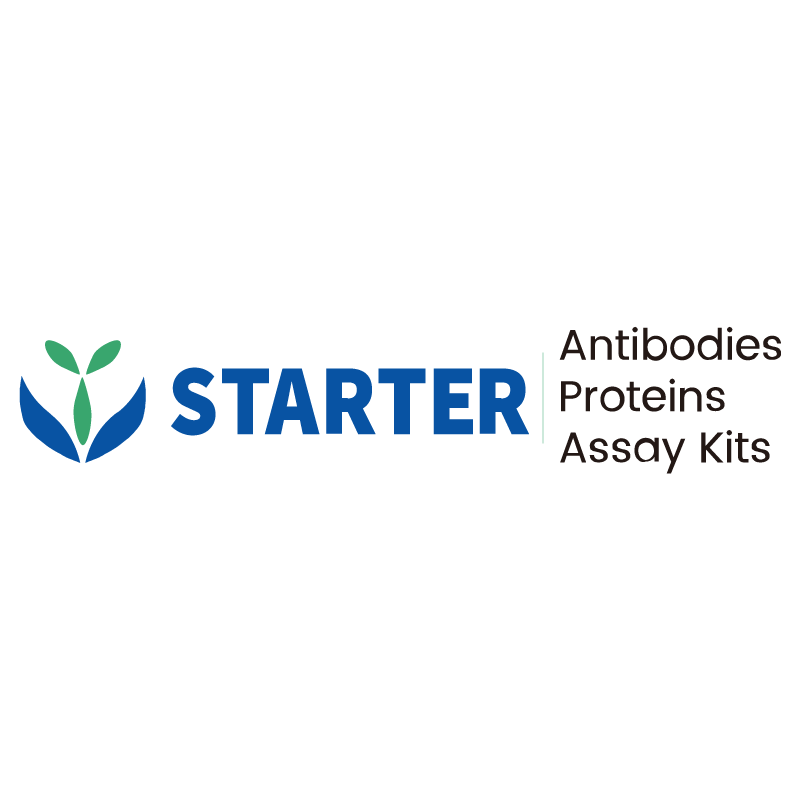WB result of PLCG1 Recombinant Rabbit mAb
Primary antibody: PLCG1 Recombinant Rabbit mAb at 1/4000 dilution
Lane 1: HeLa whole cell lysate 20 µg
Lane 2: HepG2 whole cell lysate 20 µg
Lane 3: Jurkat whole cell lysate 20 µg
Secondary antibody: Goat Anti-Rabbit IgG, (H+L), HRP conjugated at 1/10000 dilution Predicted MW: 149 kDa
Observed MW: 150 kDa
Product Details
Product Details
Product Specification
| Host | Rabbit |
| Antigen | PLCG1 |
| Synonyms | 1-phosphatidylinositol 4,5-bisphosphate phosphodiesterase gamma-1; PLC-148; Phosphoinositide phospholipase C-gamma-1; Phospholipase C-II (PLC-II); Phospholipase C-gamma-1 (PLC-gamma-1); PLC1 |
| Immunogen | Synthetic Peptide |
| Location | Cell projection |
| Accession | P19174 |
| Clone Number | S-978-37 |
| Antibody Type | Recombinant mAb |
| Isotype | IgG |
| Application | WB, IHC-P, ICC, ICFCM |
| Reactivity | Hu, Ms, Rt |
| Positive Sample | HeLa, HepG2, Jurkat, NIH/3T3, mouse brain |
| Predicted Reactivity | Bv |
| Purification | Protein A |
| Concentration | 2 mg/ml |
| Conjugation | Unconjugated |
| Physical Appearance | Liquid |
| Storage Buffer | PBS, 40% Glycerol, 0.05% BSA, 0.03% Proclin 300 |
| Stability & Storage | 12 months from date of receipt / reconstitution, -20 °C as supplied |
Dilution
| application | dilution | species |
| WB | 1:4000 | Hu, Ms |
| IHC-P | 1:100 | Hu, Ms, Rt |
| ICC | 1:2000 | Hu |
| ICFCM | 1:200 | Hu |
Background
PLCG1, or Phospholipase C gamma 1, is a member of the phospholipase C (PLC) family and plays a critical role in intracellular signal transduction. PLCG1 generates two second messengers, inositol 1,4,5-trisphosphate (IP3) and diacylglycerol (DAG), by hydrolyzing the membrane phospholipid phosphatidylinositol 4,5-bisphosphate (PIP2). This process regulates various cellular and physiological functions, including cell proliferation, survival, migration, invasion, and angiogenesis, which are essential for tumorigenesis. The role of PLCG1 in various human cancers has been extensively studied, including breast, lung, pancreatic, gastric, prostate, and ovarian cancers. It intersects with multiple oncogenic drivers and signaling pathways, such as PI3K, AKT, HIF1-α, and the RAF/MEK/ERK cascade. Furthermore, overexpression of PLCG1 is associated with tumor growth and poor prognosis in adult IDH wild-type low-grade glioma (LGG) patients. In terms of immune modulation, PLCG1 is also a crucial enzyme that regulates the NF-κB, extracellular signal-regulated kinase, mitogen-activated protein kinase, and nuclear factor of activated T-cells signaling pathways.
Picture
Picture
Western Blot
WB result of PLCG1 Recombinant Rabbit mAb
Primary antibody: PLCG1 Recombinant Rabbit mAb at 1/4000 dilution
Lane 1: NIH/3T3 whole cell lysate 20 µg
Lane 2: mouse brain lysate 20 µg
Secondary antibody: Goat Anti-Rabbit IgG, (H+L), HRP conjugated at 1/10000 dilution Predicted MW: 149 kDa
Observed MW: 150 kDa
FC
Flow cytometric analysis of 4% PFA fixed 90% methanol permeabilized Jurkat (Human T cell leukemia T lymphocyte) labelling PLCG1 antibody at 1/200 dilution (1 μg)/ (Red) compared with a Rabbit monoclonal IgG (Black) isotype control and an unlabelled control (cells without incubation with primary antibody and secondary antibody) (Blue). Goat Anti - Rabbit IgG Alexa Fluor® 488 was used as the secondary antibody.
Immunohistochemistry
IHC shows positive staining in paraffin-embedded human cerebral cortex. Anti-PLCG1 antibody was used at 1/100 dilution, followed by a HRP Polymer for Mouse & Rabbit IgG (ready to use). Counterstained with hematoxylin. Heat mediated antigen retrieval with Tris/EDTA buffer pH9.0 was performed before commencing with IHC staining protocol.
IHC shows positive staining in paraffin-embedded human kidney. Anti-PLCG1 antibody was used at 1/100 dilution, followed by a HRP Polymer for Mouse & Rabbit IgG (ready to use). Counterstained with hematoxylin. Heat mediated antigen retrieval with Tris/EDTA buffer pH9.0 was performed before commencing with IHC staining protocol.
IHC shows positive staining in paraffin-embedded human gastric cancer. Anti-PLCG1 antibody was used at 1/100 dilution, followed by a HRP Polymer for Mouse & Rabbit IgG (ready to use). Counterstained with hematoxylin. Heat mediated antigen retrieval with Tris/EDTA buffer pH9.0 was performed before commencing with IHC staining protocol.
IHC shows positive staining in paraffin-embedded human hepatocellular carcinoma. Anti-PLCG1 antibody was used at 1/100 dilution, followed by a HRP Polymer for Mouse & Rabbit IgG (ready to use). Counterstained with hematoxylin. Heat mediated antigen retrieval with Tris/EDTA buffer pH9.0 was performed before commencing with IHC staining protocol.
IHC shows positive staining in paraffin-embedded mouse cerebral cortex. Anti-PLCG1 antibody was used at 1/100 dilution, followed by a HRP Polymer for Mouse & Rabbit IgG (ready to use). Counterstained with hematoxylin. Heat mediated antigen retrieval with Tris/EDTA buffer pH9.0 was performed before commencing with IHC staining protocol.
IHC shows positive staining in paraffin-embedded rat kidney. Anti-PLCG1 antibody was used at 1/100 dilution, followed by a HRP Polymer for Mouse & Rabbit IgG (ready to use). Counterstained with hematoxylin. Heat mediated antigen retrieval with Tris/EDTA buffer pH9.0 was performed before commencing with IHC staining protocol.
Immunocytochemistry
ICC shows positive staining in Jurkat cells. Anti-PLCG1 antibody was used at 1/2000 dilution (Green) and incubated overnight at 4°C. Goat polyclonal Antibody to Rabbit IgG - H&L (Alexa Fluor® 488) was used as secondary antibody at 1/1000 dilution. The cells were fixed with 4% PFA and permeabilized with 0.1% PBS-Triton X-100. Nuclei were counterstained with DAPI (Blue). Counterstain with tubulin (Red).


